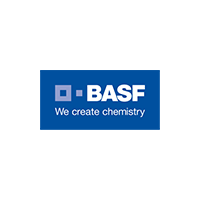 Mystic Color Car Paint — How Does it Work?
Mystic Color Car Paint — How Does it Work?
Mount Olive, NJ, February 12, 1996 — A revolution in color is coming, a change that signifies not only a trend but a completely new way of creating color.
The new Mystic color automotive paint, formulated by BASF Corporation, contains what the industry calls color-shifting interference pigments. These ChromaFlair® interference pigments, developed and manufactured by Flex Products, Inc., show dramatic shifts in color as the viewing angle changes.
The physics involved in the creation of color by these pigments is the same as that which creates the colors in a fly’s eyes, the scales of a fish or the wings of a hummingbird.
Unique reflective colors are achieved by the combination of constructive and destructive light interference. According to Jon Hall, chief color designer at BASF’s Automotive Coatings Research Center in Southfield, “Color-shifting interference pigments are creating very exciting, potentially revolutionary, new color possibilities for automotive color.”
Conventional automotive paint pigments exhibit color by selective absorption, diffuse reflection and scattering of light. For example, a transparent blue pigment reflects blue wavelengths of light in the visible spectrum and absorbs wavelengths in the other areas of the spectrum. With ChromaFlair® pigments, color is created by light interference. There is virtually no absorption of light at any wavelength — almost all light is reflected!
Traditionally, pigment color is enhanced by the addition of flake pigments, like mica and aluminum, that add mirror-like reflections of light and geometry-dependent color changes. Interference pigments are uniquely made of alternating layers that reflect or refract incoming light rays: the outermost layers consist of transparent metal and the inner layers are made up of dielectric materials and a metal reflector.
To generate or “construct” different reflective color combinations, Flex Products controls the materials that make up each layer, the layer thickness and the refractive index, or reflective property, of each layer. This high degree of production control is accomplished in high vacuum deposition chambers in a process called vacuum roll coating technology.
“Mystic is much different than standard automotive finish colors in that it carries no conventional pigment — it is a first in the marketplace,” said Bonnie Cunningham, Ford Color and Trim, of the new chameleon-like paint color from BASF. One of the most interesting potentials suggested by color, which is created by light interference, is the possibility of choosing the exact color combination that pleases you — a car that changes from emerald green to gold or a minivan that changes from cobalt blue to fireball red. BASF Corporation, with headquarters in Mount Olive, NJ, is the North American member of the BASF Group. It is among the ten largest chemical companies in the United States and produces coatings, colorants, polymers, chemicals, fibers, and consumer products, such as vitamins and pharmaceuticals. The company, which had 1995 sales of over $6.3 billion, has approximately 15,000 employees and 40 major production sites in North America.